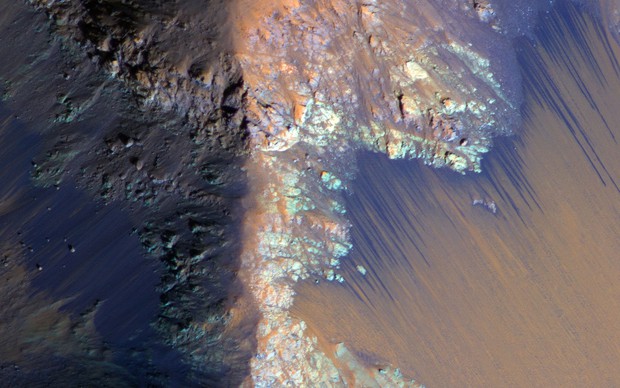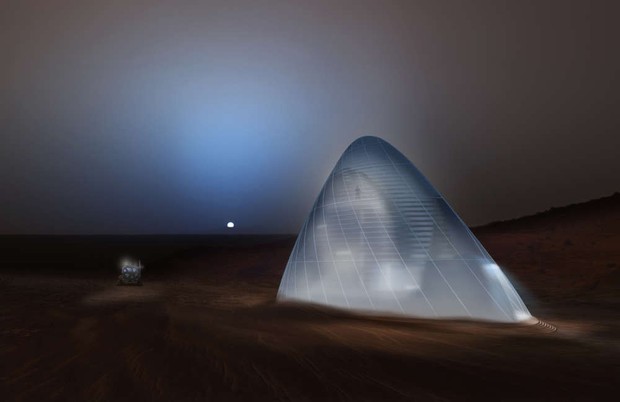If Mars has water, anyone can confirm it. But whether it’s to drink it or not, so far experts have found it.
In 2015, NASA brought humanity a century-long discovery: it found liquid water flowing on the surface of Mars. The discovery ushered in a whole new era, forcing people to immediately plan to conquer the Red Planet in the future.
Traces of water on Mars
However, even if he found water, she could not drink. The most plausible possibility if you want to send humans to Mars is to rely solely on the water under the ice on the planet’s surface.
And recently, experts in the United States have confirmed that they have found a huge amount of water under an ice cap at a position extremely close to the surface of the planet. A discovery could be considered extremely important for future missions to Mars.
Specifically, the study was led by Colin Dundas of the US Geological Survey (Arizona). They used the HiRISE (High-Resolution Imaging Scientific Experiment) system integrated on the Mars Reconnaissance satellite.
They discovered that there were about eight sites in mid-latitudes, where the cliffs had been eroded and exposed the ice below. Normally, the ice on Mars must rest hundreds of meters deep, but this ice cap is only about 1 to 2 meters from the surface.
The sites have been eroded, revealing the ice below
Additionally, the ice in this area appears in layers – similar to sediment on Earth. This proves that he can reveal a lot about the geological history of the Red Planet.
“This discovery gives us a detailed picture of some of the ice caps on Mars” – said Dundas.
“The bottom line here is that the ice caps on Mars can be buried very shallow.”
Before that, everyone knew that Mars had water in the form of ice, but as mentioned, it was too deep. Meanwhile, even Europe’s newest self-propelled robot, the ExoMars (set to land in 2021) has only dug about 2 meters.
Designing a futuristic headquarters on Mars
According to Dundas, the first data shows that this ice sheet is quite solid, but also relatively “young”, with an age of just under a million years.
The rock is also showing signs of erosion around the area, suggesting that the ice is eroding each summer. In addition, since the pressure on Mars is very low, the ice is sublimated, that is, from a solid to a gas, which makes the erosion more apparent.
Dundas shared that this finding could be of great help for future Mars discovery campaigns, as humans can benefit from this amount of water.
“This ice is expected to retain part of the planet’s history, its ability to nurture life and also a potential resource for future expeditions.
The research is published in the journal Science.




